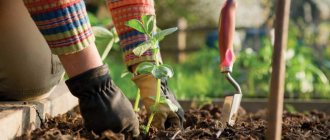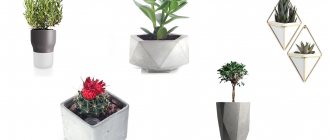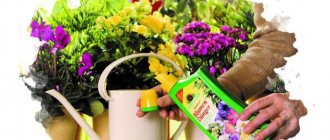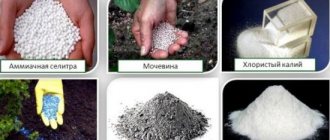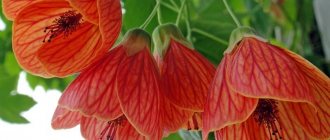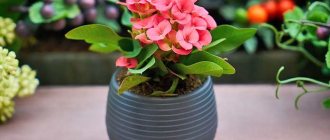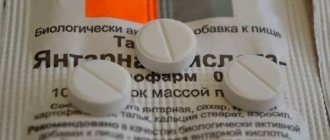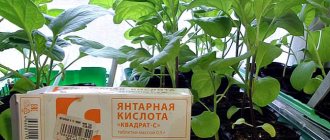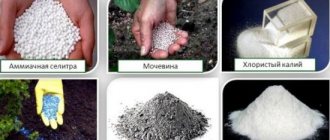The development of modern technologies has led to the appearance on the market of a large number of ready-made fertilizers for house plants. In pursuit of the best results, flower growers choose them, leaving behind effective but forgotten means. This is not always correct, because inexpensive but effective means can be used to improve the appearance and general condition of flowers. One of these is boric acid, because its effectiveness for caring for indoor plants has been known for a long time.
This product is accessible and inexpensive, it is easy to use, and the results achieved with its help often exceed expectations. Borax, in addition to floriculture, is also used in other areas, for example, in medicine or the fight against harmful insects. Cheapness and efficiency are its main advantages.
Beneficial features
The main task of boron is to ensure high-quality growth and development of the flower. It stimulates metabolism, nitrogen synthesis, and chlorophyll production. As a result, the roots receive a full amount of oxygen and calcium.
Fertilizer is an active participant in the formation of new shoots, buds, and flowers. The plant acquires a powerful leaf apparatus, a healthy root system, and prepares for abundant flowering. Preventative spraying increases resistance to adverse conditions.
Important! Lack of boron provokes the development of diseases. Indoor plants suffer from bacteriosis, rot, and viral infections. An excess of the element causes necrosis, burns, and yellowing of the lower leaves.
Benefit:
- rapid germination of seeds, bulbs, cuttings;
- increasing the volume of chlorophyll, stabilizing the synthesis of phytohormones - all this ensures the growth and development of indoor plants;
- recovery after transplantation, successful rooting of “babies”;
- stimulation of the formation of new growth points, roots, shoots, flowers, ovaries;
- strengthening stems and green mass;
- stopping putrefactive, bacterial lesions;
- anti-stress, adaptation to environmental factors;
- complete absorption of calcium and oxygen by the roots.
What are the benefits of boric acid?
Throughout the growing season, boric acid in the garden is an important component necessary for the growth of vegetation. In the case of stem treatment, an increase in the amount of oxygen transported to the rhizome is achieved . The amount of calcium in all parts of the plant also increases, the dosage of chlorophyll in the green mass becomes greater, and the metabolic process is also stimulated.
Main areas of use and benefits of the drug:
- boric acid is often used in cases of planting seeds, as the product increases their germination;
- boric acid in the garden is often used to root seedlings; accordingly, the number of plants that take up and begin to actively develop almost immediately after planting increases;
- when used at the stage of ovary formation, the substance helps to increase the number of useful flowers;
- at any stage of the growing season, acid normalizes the synthesis of nitrogen compounds;
- When fertilizing, the fastest development and strengthening of all plants is ensured.
According to agrochemists, it becomes obvious that with a sufficient amount of boron, the quantity and quality of fruiting significantly increases, crop storage improves and greater resistance to harmful growing conditions is achieved. Plants with a sufficient amount of boron compounds get sick less often and are resistant to infectious diseases, as well as to pests (cockroaches, ants).
For which house flowers should I use?
The fertilizer is suitable for feeding any indoor plants. The main thing is to recognize a microelement deficiency in time.
Use for processing:
- Cyclamena (Umbrella, Lulu, Rococo, Aurora, Victoria, Green Ice, Silver).
- Orchids (Vanda, Miltonia, Cambria, Cattleya, Phalaenopsis, Oncidium, Lady's slipper, Brassia).
- Begonia (Royal, Metallica, Bauer, Mason).
- Pelargonium (Orange, Ice Rose, Iris, Mini Diana).
- Hibiscus (Copper King, Cranberry Crush, Old Yella).
- Anthuriums (Jolie pink, Zizou, Lilly, Semper, Red).
- Indoor roses (Cordana, Prima Ballerina, Curler, Hummingbird, Baby Masquerade).
- Kalanchoe (Fiery, Kalandiva, Degremona, Blossfeld).
- Violets (Zemfira, Sputnik, Austin's Smile, Melody Kimi).
- Ficusov (Benjamina, Starlight, Natasha).
Aspirin for indoor flowers. Subtleties of application
Aspirin can improve more than just your well-being. Did you know that it has a beneficial effect on many plants, including indoor plants? The active ingredient in aspirin, acetylsalicylic acid, is obtained from salicylic acid found in willow bark and the bark of other trees.
This natural remedy can help your plants when:
· The houseplant has turned yellow; ·
The leaves began to fall;
· The flower has undergone transplantation;
· No buds are formed.
The best way to apply it is to dissolve a few aspirin tablets in water and spray it evenly on the leaves.
Why is aspirin good for plants?
Plants themselves produce salicylic acid in small quantities when they are harmed in any way. The acid helps them withstand drought, insect attack or disease.
Aspirin enhances the immune system's response, just like in humans. Aspirin dissolved in water can be watered on germinating seeds; they will grow faster and be more resistant to diseases and pests.
And in the garden it increases the size and number of root crops. Sounds too good, doesn't it?
But these findings are supported by the results of scientific research, which was carried out by Napaslenov. Aspirin was found to enhance the immune system response.
This prepared the plant to withstand attack from microbes or insects. It has also been noted that cut flowers wilt later if aspirin is added to the water, because it blocks the production of the hormone released when cutting and causing the flower to wilt.
We also experimented with root vegetables. To do this, the researchers planted two identical beds with different vegetables.
One was watered with water in which three aspirin tablets (which is about 500 mg of acetylsalicylic acid) were dissolved in 15 liters of water, and the other was watered with plain water.
Plants that were watered with an aspirin solution grew faster and produced greater yields.
Flower growers feed a houseplant by watering it with water and aspirin. Thus, they improve the health of low acidity soil and fight fungal diseases.
But, despite all the positive effects, aspirin should not be abused. If used incorrectly, it can greatly harm your flora.
Burns and brown spots may appear on the leaves. The best way to prevent this is to spray the plant early in the morning. Another reason to do this early is to avoid harming pollinating insects that are active during the day.
And watch how your plants react to aspirin. Nightshades (potatoes, eggplants, peppers, tomatoes) can be safely watered, but you will have to experiment with indoor ones.
Each plant is individual. Start with a small dose (one tablet per liter of water) and monitor the reaction.
The best part is that aspirin is inexpensive and will not harm the plant if used correctly. As with all medications, follow the instructions and you will soon notice a difference.
Signs of boron deficiency
It is easy to diagnose a mineral deficiency - just carefully examine the flower. Most often this occurs due to an unbalanced soil composition. The plant starves in acidic soils. The reasons for a decrease in the amount of boron may be excessive watering, incorrect application of organic matter, or NPK fertilizing.
Important! Check the composition of the soil in which the flower grows. A high content of sand, lime, peat, and impaired acidity lead to a deficiency of mineral components.
Growth slowdown
Microelement deficiency can be recognized by sluggish apical shoots that turn pale due to lack of photosynthesis. They suffer especially severely, even to the point of dying. A long-term lack of boron leads to a complete cessation of growth and development.
Other signs:
- the growth point is affected, the flower begins to develop with the help of side shoots;
- the appearance of young foliage abruptly stops;
- the plant freezes due to a weak root system.
Poor condition of leaves
Boron deficiency is manifested by a change in the cellular structure, an increase in the walls of the leaf blades.
External signs:
- the top of the plant suffers, signs of chlorosis begin to appear, the color changes to light green followed by yellowing;
- degradation of the interveinal space is clearly visible;
- finely spotted mosaic bleaching is observed throughout the green mass. The veins, on the contrary, darken and may become black;
- the plates become brittle and break when bent. They curl into a horizontal tube. They often thicken, become denser, and die.
No flowering
Another symptom is deformation of the ovaries. The flowers that have already appeared fall off. The formation of new ones stops. The buds do not form at all or quickly fall off. The plant looks withered and tired.
How to understand when plants need boron
By overfeeding plants with boron, you can get the opposite effect instead of increasing yield. Therefore, exceeded dosages in working solutions are unacceptable. These fertilizers are especially gratefully received by crops planted on depleted and sandy soils. They need micronutrients at all stages of the growing season.
But its deficiency is especially obvious during the crucial period of the appearance of flowers and fruits. Therefore, boron supplements are considered stimulants for lush flowering, increasing the number of ovaries and the number of seeds in fruits. In addition, they act as affordable protection. With sufficient boron content, plants acquire special immune resistance to diseases and unfavorable weather conditions.
Proportions for breeding
The drug is used carefully, with maximum caution. Carefully calculate the proportions before adding boric acid. An overdose can cause the death of the flower.
Peculiarity! The product is used in liquid or granular powder form. Both variations are available in pharmacies and garden centers. It is believed that the first option is more effective.
Proportions:
- 0.2 g/l - preparation of planting material (soaking bulbs, cuttings, seeds);
- 0.5 g/l - foliar feeding (spraying);
- 1g/10 l - root feeding (introduction into the soil mixture).
The effect of boron on plant growth and development
Although the need for boron in indoor flowers is small, even this necessary microdose is an important element in the physiology of the plant organism. Boron has a positive effect on many processes in the development of indoor flowers. It is an effective adaptogen (a drug that can increase a crop’s resistance to harmful influences) and a growth stimulant. The benefits of applying it in the correct amount to houseplants are manifold:
- stimulates faster seed germination;
- helps strengthen the walls of the stem;
- participates in the formation of plant reproductive organs;
- increases the number of new growth points of stems and roots;
- after planting seedlings in a permanent place of growth, it promotes their rapid adaptation;
- enhances crop resistance to sudden temperature changes and attacks of harmful insects.
There are special boron-based fertilizers used in large-scale gardening. For indoor floriculture, the optimal preparation is boric acid. It contains a fairly high concentration of the element. In the soil, especially calcareous, sandy and acidic, there is not enough boron, and even after accumulating in old plant tissues, it does not migrate to young ones, therefore for the normal development of house plants it is necessary to regularly add it in the form of fertilizer or foliar feeding.
It should be borne in mind that even with a sufficient concentration of boron in the soil, plants may absorb it poorly due to prolonged drought or prolonged excessive moisture, too intense lighting or an abundance of potassium and nitrogen fertilizers.
Methods of application as fertilizer
Boron deficiency cannot be compensated for by one-time feeding. Fertilizers based on it are used not only in spring, but throughout the entire growing season.
Clean solution
The drug is used to treat seeds, bulbs, and cuttings of indoor plants before planting. This will increase the growth factor and the quality of young shoots. Prepare a solution at a dosage of 0.2 g/l. Dissolve the powder in water with continuous stirring. Soak the seed for 12 hours.
To enhance the effect, use a complex of microelements:
- 0.1-0.3 g boric acid;
- 0.5 g zinc sulfate;
- 1 g potassium permanganate;
- 1 g molybdenum;
- 0.5 g methylene blue;
- 0.5 g of copper sulfate.
The multimineral composition is diluted in a liter of water. The planting material must be completely immersed in the solution. When processing is completed, it is dried and planted.
Spraying
Wetting the green mass leads to abundant and long-lasting flowering. Increases resistance to diseases, pests, unfavorable and stressful growth conditions. Carry out the first wetting in the budding phase, the second - at the peak of flowering, the third - 2 weeks after it.
What to do:
- Add 5 g of powder to 10 liters of water or use a proportion of 0.5 g/1 liter.
- Pour the composition into a spray bottle and wet the sheet plates on both sides. Clean them from dust first. Irrigate foliage in the evening or on a cloudy day. Otherwise, the plant will suffer from burns.
Peculiarity! Combining boron with other microelements requires a dosage reduction of 50%.
Top dressing
Adding fertilizer to the soil is effective for flowering plants. It is carried out rarely, once every 3 years, when signs of boron deficiency are visible.
What to do:
- moisten the soil to avoid root burns;
- prepare a solution based on 10 liters of warm water and 1 g of powder. To ensure complete dissolution, first dilute the granules in hot water, then bring the amount to the specified volume;
- water the plant;
- place the pot in a sunny place - fertilizing will stimulate nitrogen production, and ultraviolet deficiency will negatively affect subsequent growth.
Don't forget to add fertilizer to the soil if you plan to plant seedlings or seeds. Water the soil with a watering can, loosen it and use it for its intended purpose.
Table 1. Regulations for introducing boron fertilizers into the soil
| Boric acid | 0.8-1.2 g/sq.m |
| Borax | 1.5-2 |
| Boric superphosphate | 2-2.5 |
| Boron-datolite fertilizer | 1.5-2 |
How to use boric acid to control ants and other insects?
The acid is effective against a number of pests: cockroaches, ants and some other insects. The powder is placed as bait, and the insects eat it and are poisoned.
There are several ways to prepare bait:
- a simple method with low efficiency - scatter acid around the hives;
- 100 ml of boiling water is heated, it is mixed with 5 g of acid. When the powder dissolves, add 1 tsp. honey and 2 tbsp. l. Sahara. After thorough mixing, pour into a container with an open top and place it close to the ants’ paths;
- grind 2 yolks from chicken eggs and 0.5 tsp. acids. It is expected to obtain small peas, which are placed in areas with a large number of ants;
- 1 tbsp. l. water, 2 tbsp. l. glycerin, 1 tsp. honey, 0.5 tsp. boron and 1.5 tbsp. l. sugar - all this is mixed until the bait is obtained in the form of balls;
- 3 potatoes, boiled in their jackets, 3 boiled yolks, 10 g of acid and 1 tsp. grind and mix thoroughly. The resulting balls are placed in places where insects are pests.
It is necessary to protect the scattering from consumption by pets.
Expected effect
3-4 days after feeding, the plant comes to life. The green mass acquires a healthy, rich color. The stems become stronger. Growth and development are restored, normalized.
Boric acid unlocks the potential of flowering indoor plants. Fertilizer ensures lush and long-lasting flowering. By the end of the growing season, the flowers go into rest strong, prepared, and are less likely to suffer from pests, rot, bacterial, and viral infections. Successfully withstand adverse environmental conditions.
Application on grapes, strawberries and fruit crops
Boron is used to feed all fruit trees, shrubs and strawberries.
Grape. It has a great need for boron during the flowering period. It accumulates in grape flowers and plays an important role in the pollination process. If there is a deficiency of the element, pollen is formed slowly. Therefore, feeding grapes with boron is an important step in caring for the vineyard. Indicators of element deficiency are the appearance of yellow spots on the leaf and the absence of a normal ovary (peas). Application schedule: 1st time - before flowering (10g per 10l), 2nd time - after 10 days, 3rd time - during the period of fruit growth.
Strawberry. Signs of starvation are deformation and wilting of leaves, shedding of the ovary. Feeding scheme: watering the soil in early spring (1 g per 10 liters of water), spraying the bushes before flowering (2 g per 10 liters of water).
The result is a high yield of strawberries.
Fruit trees. Indicators of the absence of boron in sufficient quantities - the leaves thicken and twist; the tops of young shoots die off; spots appear in the fruits, similar in structure to a sponge. Some of the pulp becomes tasteless. This phenomenon is especially noticeable on the fruits of pears and apple trees. The dilution scheme for the drug for trees is 20g per bucket of water. Apply to unopened flowers and ten days after the petals fall off.
Precautionary measures
The substance belongs to hazard class IV, which means it does not cause harm if it comes into contact with exposed skin. But powder particles can enter the body through the respiratory tract, so prepare the supplement while wearing a mask. Avoid contact of the solution with damaged skin (wounds, scratches). Make sure that children and animals do not take the acid inside. If this happens, consult a doctor immediately.
Possible harm
It is very difficult to cause damage to indoor plants when using boric acid. The product is recognized by flower growers as one of the safest.
Negative consequences of excessive feeding:
- the leaf plates are deformed and take on a dome-shaped shape;
- the roots suffer from burns (happens when fertilizer is introduced into dry soil);
- the border of leaves dries out;
- the green mass dies and falls off.
How to feed indoor flowers to bloom. Food products for plant nutrition
When wondering what to feed your house flowers at home, you can look into the kitchen. Many common products are complete natural fertilizers. These include:
- Sugar, which is an affordable flower food at home. When it decomposes, fructose and glucose are formed - an important substance for the growth and development of plants, especially useful during their flowering. To prepare the fertilizer, 1 tbsp. l. sugar is dissolved in 500 ml of water. Flowers are watered with a sweet solution. For a chemical reaction to occur and the fertilizer to work, carbon dioxide is needed. In autumn and winter there is little of it in a room with central heating. Therefore, feeding is more suitable for spring and summer. It is not recommended to apply it under succulents.
- Eggshells are a complete source of calcium needed by flowers. Shells are collected throughout the year. It is washed, dried and crushed into powder: it is in this form that the shell can completely release calcium and sulfur to the flowers. The powder is used in dry or dissolved form. It should not be used frequently: a high concentration of fertilizer reduces the acidity level of the soil and can lead to chlorosis and fungal diseases.
- Onion and garlic peels contain not only useful elements, but also phytoncides that protect plants from diseases. An infusion of the husks is used to spray flowers. To prepare it, pour 1.5 handfuls of raw materials with warm water and boil for up to 10 minutes. Cool, filter and then use. Top dressing is prepared no more than 2 times every 30 days. But not all flowers like this “treat”. Do not spray cyclamens, geraniums and violets with this solution.
- Tea leaves are used as mulch (in dried form), to create drainage and as a liquid fertilizer. Domestic fern species are especially responsive to it. Sometimes feeding is enhanced by adding sugar.
- Coffee grounds will make the soil soft and fluffy and saturate the flowers with nitrogen. To feed, take a handful of dried grounds, carefully spread it over the surface of the soil with a fork and water it. Coffee grounds increase the acidity of the soil. Not all plants respond well to an acidic environment. Gladioli, roses, lilies and azaleas like it. Evergreens do well in such conditions.
- Yeast is the most active fertilizer for home flowers. At home, plants will develop vigorously from it. Contains B vitamins, phytohormones and other beneficial substances. To prepare pressed yeast feeding, take 15 g per 1.5 liters of warm water, and dry yeast - 1 g per the same volume of water. Place 1 table in the first sugar solution. l., in the second - 1 teaspoon. The solutions are infused for 3 hours, then 5 glasses of water are added to 1 glass of infusion, stirred and fed to the flowers.
- Banana peel is an excellent choice for those who decide how to feed their home flowers. Contains many useful substances, including potassium, phosphorus, magnesium. To highlight them, different methods are used. Sometimes the skin is cut into small pieces and placed in a container so as to fill it by a third. Pour water so that it covers the contents of the jar and leave until fermentation begins. When the fermentation process is activated, the infusion is drained, diluted with water and watered over the flowers. Fertilizing is very effective, but has a drawback - an unpleasant odor. More often the peel is used differently. When preparing the soil for planting, layer the soil and crushed banana peels into the pots. The fertilizing will begin to take effect later than the liquid one, but it will also saturate the plant with the necessary nutrients. Often the banana skin is cut, dried and ground into powder. The powder is placed into a hole dug around the flower, sprinkled with earth and watered. Potassium, which the infusion is rich in, will make the color of the leaves bright and give them shine.
- Citrus fruit peel. To prepare the fertilizer, cut the peels of citrus fruits, place them in a container and pour boiling water over them. After a day, the infusion is drained; one part of it is diluted with three parts of water and the flowers are watered. Some gardeners mix the infusion with banana peel infusion and/or sugar. Citrus infusion contains citric acid, nitrogen, potassium, magnesium and calcium in the necessary quantities for the growth and health of flowers. Fertilizing repels many pests of indoor plants. The use of fertilizer depends on the season: in autumn and winter it is used once, and in summer and spring - twice a month. Do not water orchids and cacti with the solution.
What water should I use for irrigation?
Now I remember my first experience with a smile. Today I have a little less than a dozen phalaenopsis in my collection. They all bloom almost continuously. How to achieve crazy flowering of orchids? Watering with regular water is, of course, important, but it only provides the plant’s moisture needs. Yes, and here there are some nuances.
First of all, you need to pay attention to water quality. The high content of salt impurities in tap water makes it unsuitable for irrigation. With constant use of this source of moisture, the roots of the orchid become covered with a dark coating due to the resulting burn, they are so tender.
It is best to use melt, rain or boiled water. Personally, we replenish our water supply from the nearest spring. The water temperature should always be 3-4 degrees above room temperature. Do not forget that orchids grow in the tropics, so cold and cool water are contraindicated for them.
A nicotinic acid
Nicotinic acid is needed for proper hormonal metabolism during the period of active growth. Thanks to its resuscitation actions, it is suitable for flowers that are in a declining state. Regular use of niacin will accelerate the growth of new root cells in the plant. Nicotinic acid is the familiar vitamin B3 in its pure form, and since it is practically not contained in vitamin cocktails for flowers or its concentration is low, orchids simply need this acid at least two or three times a season.
Hormones are restored: scientists explained the healing power of hugs
The dissatisfied simply left: how the poor defended their rights in Ancient Rome
Pastel and favorite jeans: trendy spring looks to lift your spirits
